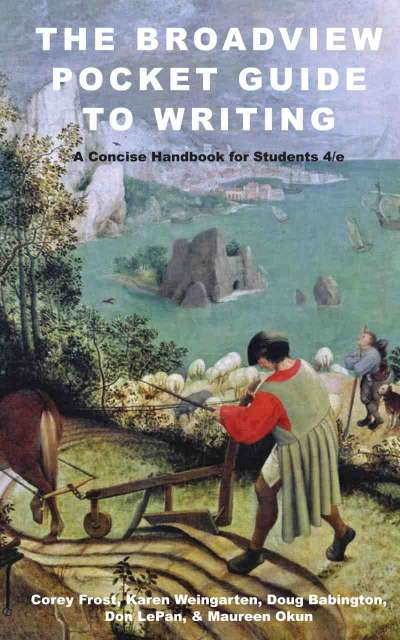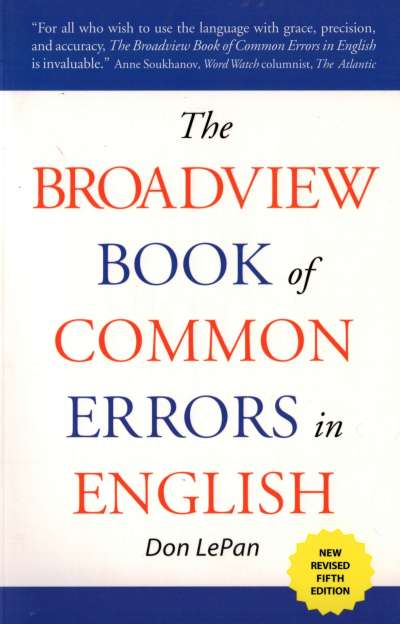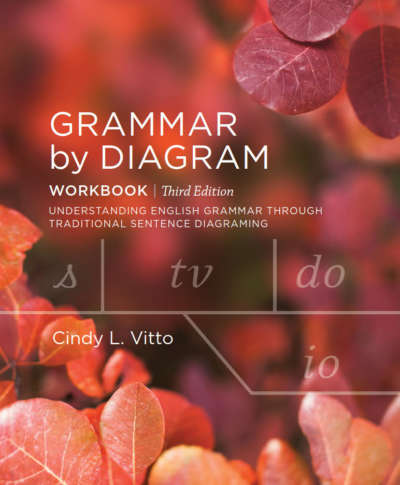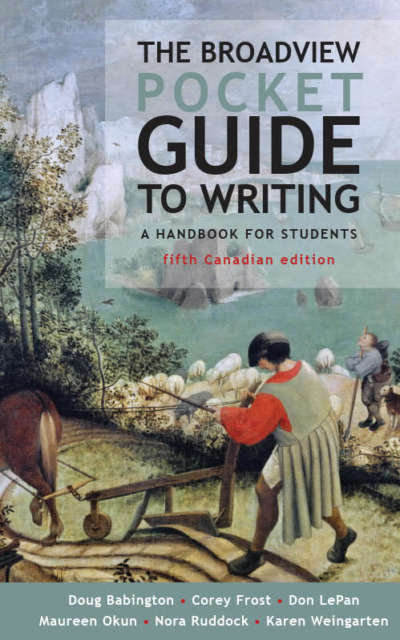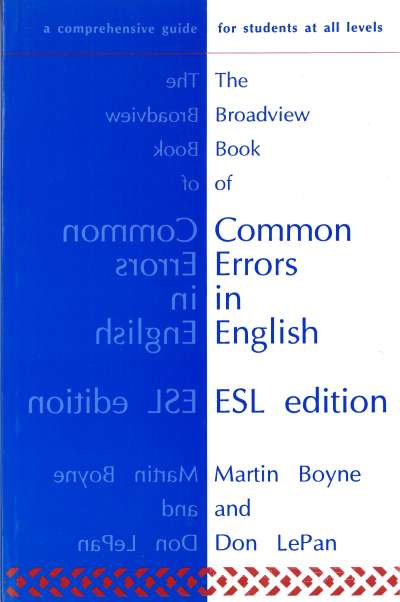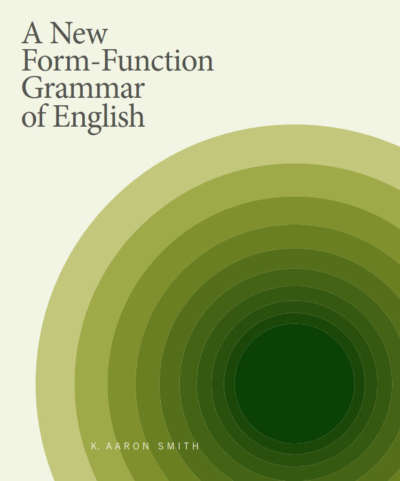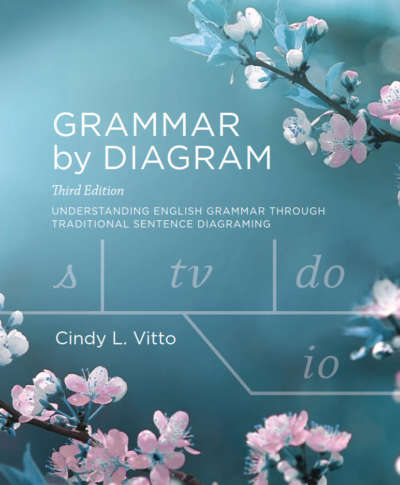For many years, the coverage of grammar and usage in The Broadview Guide to Writing has received particular praise. Now, for the first time, that material is made available in a stand-alone volume. Readable, reliable, and comprehensive, The Broadview Guide to Grammar, Usage, and Punctuation is appropriate for students at all post-secondary levels.
The book is divided into four sections. The Grammar section provides unrivalled coverage of complete and incomplete sentences, dangling constructions, and other subjects that give many writers special difficulty. The Usage section offers sensible and up-to-date advice on hundreds of points that frequently cause confusion. The Punctuation section provides a wealth of helpful guidance on all aspects of punctuation, with particular attention paid to such vexed questions as when to use the colon and the semi-colon, and (when using quotation marks) how to properly integrate quotations into one’s own text. A final section, English as an Additional Language, gives a wide range of helpful advice on special issues that may arise for those whose native language is not English.
A companion website provides hundreds of exercises on every topic covered in the book itself. Many of these are interactive; on completing an exercise, students are told how they did—and explanations are provided as to why the right answers are right and the wrong answers are wrong.
This book is adapted from The Broadview Guide to Writing, which is available in American and Canadian editions
Comments
Comments on The Broadview Guide to Grammar, Usage, and Punctuation and on The Broadview Guide to Writing:
“The Broadview Guide to Grammar, Usage, and Punctuation is a superb, comprehensive guide that I'll be adopting across all my writing courses. It’s easy for students to navigate, and it clarifies meanings of key terms in a way that other grammar guides do not. The coverage of run-on sentences and sentence fragments is particularly strong—as is the coverage of subject–verb agreement errors and of dangling modifiers. The coverage of special issues arising for those whose first language is not English is well thought-out. Throughout, the examples are excellent, spanning a variety of contexts and disciplines, and the text is highly readable, especially when compared to other guides I have used. The exercises on the user-friendly companion website are original and engaging; I will definitely assign these. The Broadview Guide to Grammar, Usage, and Punctuation fills a need for a detailed but easily comprehensible student guide, and it’s certain to be of use across a range of disciplines.” — Louise Kane, University of Central Florida
“This is by far the best grammar textbook that I have seen in many years.” — Andrey Reznikov, Black Hills State University
“Even the most useful reference guides are not always, well, shall we say, riveting. A refreshing exception is The Broadview Guide to Writing, which is smart, helpful, and even fun to read.” — Gerald Graff and Cathy Birkenstein, authors of They Say / I Say: The Moves that Matter in Academic Writing
“The Broadview Guide to Writing is not only informative and impressive; it is smart—smartly written and smartly designed.” — Dennis Paoli, Co-coordinator, Writing Across the Curriculum, Hunter College, CUNY
“The Broadview Guide remains the most readable writing guide available—at any price. Moreover, it’s sensible, and it’s complete. The authors assume nothing, but they don’t condescend.” — Jacky Bolding, University of the Fraser Valley
“There’s so much to like here: the sense of proportion, the sensible layout, the precision of the usage notes, the sound stylistic advice, and the examples…. The text is clearly informed by the best traditions of composition and rhetoric, but comes across in a disarming fashion with a common-sense approach…. Long after the course is over, students will want to keep this book as a manual of style and usage.” — Thomas L. Martin, Department of English, Florida Atlantic University


